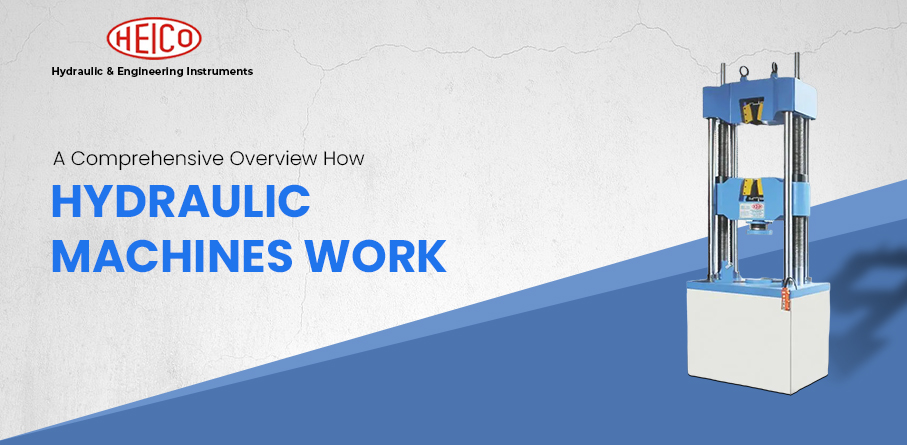Hydraulics are pervasive; they power everything from the elevator at your workplace to the garbage truck you pass on the street. The term "hydraulics" might be foreign to you. Among the world's heavy machinery, you'll find this robust system. Hydraulic Machines can move at high speeds and lift tremendous loads. Various hydraulic systems based on the same energy principles are in use today. Here, we will explain the inner workings of the hydraulic systems.
What is the Function of a Hydraulic System?
You already have a basic understanding of how and what makes up hydraulic systems by Hydraulic Machine Suppliers. If you've ever tried to squash a solid, you know it won't happen. Squeezing a solid object, such as a pen or a piece of wood, will not cause any damage to the material. They don't squish or compress. The same holds for liquids. It won't compress under pressure because it is incompressible. Its volume remains unchanged relative to its unpressed state. Imagine some water in a syringe. The plunger and water will remain stationary no matter how hard you press down with your finger on the end.
Incompressibility plays a crucial role in the operation of Hydraulic Machines. Using the same syringe, you can release water quickly through the narrow end by pressing down on the plunger normally, regardless of how little pressure you apply. Putting pressure on the water causes it to try to escape in any way it can, in this case through a very small opening, as you lower the plunger. Powering increasingly intricate devices is now within your reach, thanks to this application demonstrating how to multiply force.
To compress liquid, a Hydraulic System, in its most basic form, consists of pipes with a weight or piston attached to one end. The pressure from this object pushes the liquid out of a smaller pipe at the opposite end. Instead of squashing, the water rapidly propels itself through the pipe and out the tiny end. The inverse is also true for this system. Putting more pressure on the narrow end over a longer period will cause it to produce enough force to move something substantially heavier on the opposite end.
This system does come with a small cost. Usually, if you increase the speed or force applied to one end, the other end will respond oppositely. As an illustration, the wide end will experience high force but low speed when you press down on the narrow end with high speed and low force. Your narrow end's travel distance is a good indicator of your wide end's potential. It is common practice in many systems, including hydraulics, to trade off distance for force.
When lifting large objects, the multiplicative effect of force is crucial. If the larger piston is six times bigger than the smaller one, the force exerted on the fluid by the larger piston will be six times stronger at the smaller end. Consider the effect of a 100-pound force at the wider end on the narrow end: it produces a 600-pound force. One reason hydraulic systems can be compact is because of this force multiplication. You can power massive machines with them, which only takes up a little room.
Conclusion
In addition to plating, electropolishing, and bespoke fabrication, Heicoin, one of the top Hydraulic Machine Manufacturers in Delhi, fixes hydraulic systems of all kinds. They hope you have better-understood hydraulics and learned something new about its operation today. Go ahead and get in touch with them right away if you're interested in hydraulics.




0 Comments